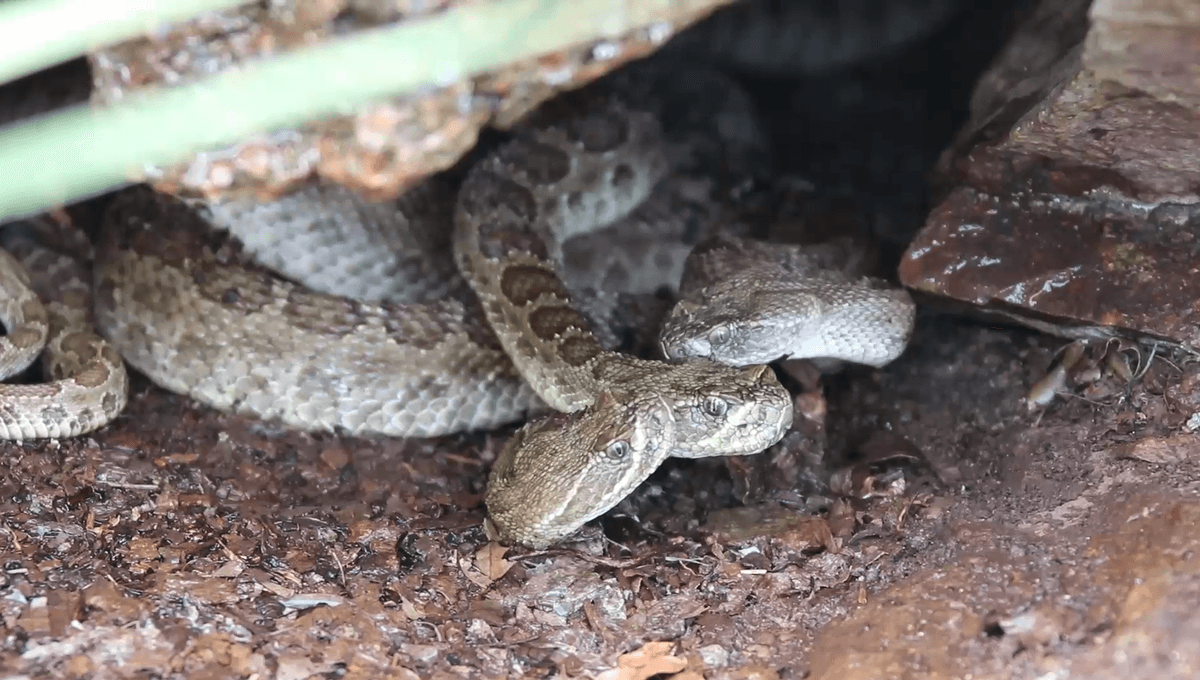
Surviving in harsh climates is part and parcel of life in the animal world and coming up with adaptations to make life easier in very dry habitats can lead to some pretty remarkable features. Now, researchers have taken a closer look at the behavior of rattlesnakes to work out not just how their bodies are adapted to survive in areas with little rainfall, but how the snakes adapt their behavior to match.
The researchers studied prairie rattlesnakes (Crotalus viridis) living in an area near Steamboat Springs, Colorado, which receives less than 2 millimeters (0.07 inches) of rain per month from April to October, when the snakes are most active. It is also home to Rattlesnake Butte, an area that contains nearly 1,000 individual rattlesnakes. To simulate rainfall and record the snakes’ behavior, the team set up cameras and spritzed the snakes with a sprayer.
The water showers revealed three new behaviors for gulping the water from the rattlesnakes. Either the snakes gathered together and drank water off each other’s bodies and heads, or they caught water on their own faces and drank, or the snakes seemed to turn themselves into bowls and tip the water toward their mouths, running over their scales by flattening their bodies. The team also observed the snakes either drinking off of their own skin, the skin of a neighbor, or a non-snake surface, like rocks or leaves.
Of the 94 snakes in the experiment, 41 were seen drinking. The snakes that did drink had five unique phases that occurred mostly in the same order: initiation, exploration, body position, drinking, and post-drinking. Some snakes did skip phases or repeat phases. In the body position phase, snakes that did not drink barely flattened their bodies, while the drinking snakes flattened themselves 49 percent of the time. Drinking was easily the longest phase, lasting around four minutes, while the other stages were typically less than 16 seconds each.
The team conclude that using the sprayer as simulated rainfall is a good proxy and that the novel behaviors they observed within the snakes are in line with other research. The three techniques for drinking water shed light on the behavioral adaptations to increase the water intake of this species during the dry season. Learning more about how they behave during this period could help protect the species against a changing climate in the future.
The study is published in Current Zoology.
Source Link: Watch Thirsty Rattlesnakes Drink Rainwater From The Heads Of Their Neighbors